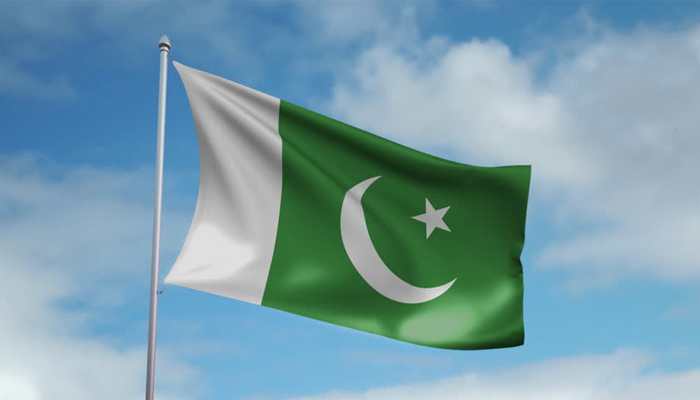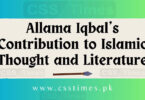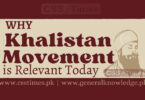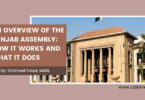Pakistan’s 71st Independence anniversary is a time for looking back to see forward. The country is a prime example of the global historian Toynbee’s challenge and response theory. If the challenge facing a civilization, a country or a society is too great as in the artic, then the struggle to survive in the harsh climate leaves no room to develop. Conversely if there is hardly any challenge as in the South Seas where the weather is pleasant all year round and fruit and fish abundant the lack of challenge provides no spur to change. Progress comes out of the crucible of facing and overcoming challenges.
For Pakistan its very formation as a new country was a tremendous achievement. The Muslim community had to overcome the opposition of the ruling colonial power the British and the larger non-Muslim community, that too in a precipitate time frame not of its making, without the eight years interim period to prepare that it had accepted. But the Congress leaders rejected the Cripps plan because Pakistan would have eventually emerged larger in territory and because they wanted to ensure that as many Muslims as possible were forced to leave.
Once independent it made do with skeleton civil services, seven million traumatized refugees, no industrial base, a small ill-equipped military, withheld bank reserves, and with part of Muslim majority Kashmir which was its rightful territory being invaded and partially occupied. On both sides hostile neighbours-India and Afghanistan pursued irredentist claims. India claimed and tried to occupy the whole of Kashmir. Afghanistan formally demanded from the British, before Partition, all of FATA and the NWFP up to the Attock. Many foreign observers and in neighboring countries assessed that the security and economic challenges were so great that the country would not survive. But it did and prospered.
That skepticism abroad labeling the country on the edge of chaos and a failing state is periodically revived as in the 1990s, with its fainter echoes even more recently. The reality is different. Yes challenges persist: internal, external, with new global challenges such as terrorism and climate change. The record of successive governments and their leadership, both political and military, has been mixed as indeed the case in other countries.
An industrial base was built up, infrastructure augmented, democratic consciousness deepened, workers on the backs of whose hard work and technical expertise the Pakistan and the Gulf states’ infrastructure was built and whose remittances bolster the home economy; and a growing middle class. Despite the country being dismembered in 1971 by Indian aggression, Pakistan rebounded, enhanced its regional and international relevance, and was increasingly looked up to in the Muslim world as the champion of its causes and its strongest military power.
The tragic events of 1971 imbued policy makers with a – it must never happen again-dedication. Though unfairly targeted from 1974 because of India’s breach of nuclear safeguards, Pakistan overcame all sanctions and restraints to become a nuclear power utilizing a technological path which had not been mastered by any nuclear power for its first test. A strategic capability not only pivotal to peace, security and stability in South Asia but whose peaceful civil nuclear power uses are contributing to electricity generation in this fossil fuel deficit country. Also to agricultural and biotech research, new crop varieties, salinity control, water management and providing no-cost or at-cost nuclear diagnosis and treatment annually to 800,000 cancer patients. Not only for Pakistanis but Afghans as well who benefit from free medical care in general in Pakistan. An achievement unmatched in any developed country.
The American sponsored Jihad to remove Soviet troops from Afghanistan depended upon Pakistan’s support but left a legacy of extremism, terrorism, narcotics, and arms which have continued pouring in from Afghanistan; apart from nine million refugees of whom 1.4 million remain after almost four decades, and at least an equal number of illegal economic migrants.
When Pakistan had just about recovered from the first Afghan ordeal, the tragic terrorist attack of 9/11 took place. With western occupation, the second blowback from Afghanistan began, worsened by the use of Afghan soil by India and the Afghan intelligence service not only to give bases to regroup and to launch attacks to terrorists who have fled Pakistan but also to sponsor and send terrorists, insurrectionists, arms, explosives, and narcotics into Pakistan with the resultant loss of so many civilian, police, civil armed forces and military lives, in which school children were specially targeted, one instance being the terrorist attack on the Army Public School in Peshawar and its tragic aftermath. It is facile for the foreign powers -who still survive in Afghanistan on the oxygen that Pakistan provides – and who have failed in Afghanistan despite 17 years occupation, to say that Pakistan should ‘do more’ to help resolve Afghanistan or develop a better counter-extremism narrative. All the extremists had to say was that ‘Islam in under threat, Muslim countries are occupied’. It is a credit to the discipline of the Pakistan military that despite the unpopularity of the government’s support for the occupying forces in Afghanistan the long and hard campaign against terrorists within Pakistan has been largely won not only by its leading from the front officers but equally by the less educated foot soldiers who have resisted such religious and emotional propaganda.
The current economic difficulties are due in large part to the economic cost and foregone foreign investment resulting from the continuing foreign occupation of and turmoil in Afghanistan and the resulting terrorist attacks emanating from across both the eastern and western borders. What is more, natural disasters too have not spared Pakistan. The October 2005 Earthquake disaster killed 67,000 people within a few hours, the floods of 2010 and 2011 inundated large and heavily populated parts of the country, but the nation rebounded. However the resilience of Pakistanis stands out.
What though of the future? It is a time of hope, with significant political change. Imran Khan, leader of the PTI, the next Prime Minister carries none of the traditional baggage of Pakistani politicians, civil and military these past sixty years. He has no dynasty, businesses, or riches to protect. No unconstitutional personal power to safeguard to curry favour at the nation’s expense with any superpower. He has a majority mandate and unlike his predecessors is capable of being decisive.
The solutions to the country’s problems are self-evident. While population growth needs to be further reduced; there is a youth dividend, which is increasingly politically active. Pakistan needs to cash in on its youth dividend by making education including vocational training a top priority. This is the third sequential democratic change of government which demonstrates the deepening of the democratic process. With progressive fencing of the 2560 km border with Afghanistan, late though it may be, border management and counter terrorism capacity will further improve. The Pak-China Economic Corridor, the latest manifestation of the strategic partnership with China, through its multidimensional projects should contribute to transforming Pakistan, one reason for the opposition it has attracted in the region and abroad.
Pakistan’s resilience has proved to be its strength. On this independence anniversary it is clear that the county has a bright future. Though Pakistan’s development may have been uneven, the momentum of its 214 million inhabitants, whose indomitable spirit has overcome so many challenges, shall always carry it forward.
The writer is a retired Pakistani diplomat.
Originally published in Daily Nation Lahore







